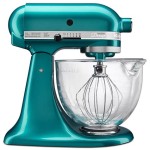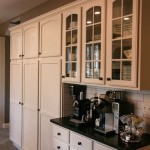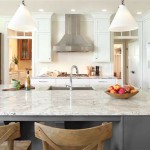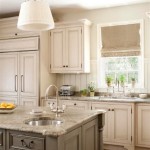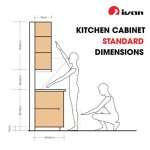Elevating Outdoor Living: The Outdoor Kitchen with Covered Patio
The integration of an outdoor kitchen with a covered patio represents a significant enhancement to residential living, extending the functionality and aesthetic appeal of a home beyond its interior walls. This combination provides a versatile space for cooking, dining, entertaining, and relaxation, all while being sheltered from the elements. Careful planning and consideration of various factors are crucial to creating a successful and enjoyable outdoor living environment.
An outdoor kitchen is more than simply a grill and a countertop; it’s a fully functional extension of the indoor kitchen, equipped with appliances, storage, and workspaces designed for efficient food preparation and service. A covered patio provides shelter from sun, rain, and wind, creating a comfortable environment for both cooking and dining regardless of the weather. When combined, these two elements offer a seamless transition between indoor and outdoor living, fostering a more connected and engaging lifestyle.
Key Considerations in Designing an Outdoor Kitchen with Covered Patio
Designing an outdoor kitchen with a covered patio requires a holistic approach, considering both functional and aesthetic aspects. The goal is to create a space that is both practical for cooking and entertaining and visually appealing, blending seamlessly with the surrounding landscape and architectural style of the home. Several key factors should be carefully considered during the design process.
Location and Layout: Selecting the optimal location for the outdoor kitchen and covered patio is paramount. Proximity to the indoor kitchen is often desirable to minimize travel distance when transporting food, utensils, and supplies. Consideration should also be given to prevailing winds to minimize smoke exposure and ensure comfortable ventilation. The orientation of the patio in relation to the sun's path is also important, as prolonged exposure to direct sunlight can make the space uncomfortable during certain times of the day. The layout of the kitchen and patio should maximize available space, provide ample work areas, and facilitate easy movement between cooking, dining, and seating areas. A well-planned layout will enhance both functionality and aesthetic appeal.
Materials and Finishes: The materials used in the construction of the outdoor kitchen and covered patio should be durable, weather-resistant, and aesthetically pleasing. For the kitchen countertops, materials such as granite, stainless steel, and concrete are popular choices due to their durability and resistance to heat, stains, and scratches. The patio flooring can be constructed from a variety of materials including pavers, stone, concrete, or composite decking. The covering structure can be built from wood, metal, or a combination of both. The selection of materials should complement the architectural style of the home and the surrounding landscape. Proper sealing and maintenance are essential to ensure the longevity and aesthetic appeal of the materials.
Appliance Selection: The choice of appliances for the outdoor kitchen should be based on the homeowner's cooking style and entertaining needs. A high-quality grill is the cornerstone of most outdoor kitchens, with options ranging from gas grills to charcoal grills to smokers. Other popular appliances include side burners, refrigerators, sinks, ice makers, and outdoor ovens. The size and type of appliances should be carefully considered based on the available space and the intended use of the kitchen. Energy-efficient appliances can help reduce utility costs. Proper ventilation is especially important when using appliances that produce smoke or fumes.
Selecting the Right Covering for the Patio
The type of covering chosen for the patio plays a significant role in the overall comfort and usability of the outdoor kitchen and dining area. The covering provides protection from the elements, extends the lifespan of outdoor furniture, and contributes to the aesthetic appeal of the space. Several options are available, each with its own advantages and disadvantages.
Solid Roof Structures: A solid roof, constructed from materials such as wood, metal, or composite, provides the most reliable protection from the elements. Solid roofs can be designed to match the architectural style of the home, creating a seamless extension of the living space. They can also be insulated to provide additional thermal comfort and reduce noise transmission. However, solid roofs can block natural light and may require artificial lighting to illuminate the patio area. Careful planning is needed to ensure proper drainage and prevent water damage.
Pergolas: Pergolas are open-framed structures that provide partial shade while allowing ventilation and natural light to pass through. They are typically constructed from wood or metal and can be adorned with climbing plants to create a more natural and visually appealing environment. Pergolas offer a balance between sun protection and open-air ambiance. However, they provide limited protection from rain and wind. A retractable canopy or shade sail can be added to a pergola for increased protection from the elements.
Awnings and Shade Sails: Awnings and shade sails are fabric coverings that can be extended or retracted to provide shade and protection from the sun. Awnings are typically attached to the house and can be manually or motor-operated. Shade sails are suspended between multiple anchor points, creating a dynamic and visually appealing shade structure. Awnings and shade sails are relatively inexpensive and easy to install. However, they may not be as durable as solid roofs or pergolas and may require periodic maintenance or replacement.
Integrating Functionality and Aesthetics
A successful outdoor kitchen with a covered patio is one that seamlessly integrates functionality and aesthetics. The space should be both practical for cooking and entertaining and visually appealing, creating a welcoming and comfortable environment for residents and guests. This integration requires careful consideration of various design elements.
Lighting: Proper lighting is essential for creating a functional and inviting outdoor space. Task lighting should be provided over work surfaces in the kitchen to ensure safe and efficient food preparation. Ambient lighting can be used to create a relaxed and inviting atmosphere for dining and entertaining. Accent lighting can be used to highlight architectural features or landscape elements. A combination of different types of lighting can create a layered and dynamic lighting scheme. Energy-efficient LED lighting is a popular choice for outdoor applications due to its long lifespan and low energy consumption.
Seating and Dining Arrangements: The seating and dining arrangements should be carefully planned to accommodate the expected number of guests and to facilitate comfortable conversation and interaction. A variety of seating options can be incorporated, including dining tables, lounge chairs, and bar stools. The furniture should be durable, weather-resistant, and aesthetically pleasing. Cushions and pillows can be used to add comfort and style. The layout of the seating and dining areas should allow for easy movement and circulation.
Landscaping and Décor: Landscaping and décor can enhance the aesthetic appeal of the outdoor kitchen and covered patio, creating a more natural and inviting environment. Planting beds can be used to soften the edges of the patio and to add color and texture to the space. Trees and shrubs can provide shade and privacy. Outdoor rugs, cushions, and artwork can be used to personalize the space and to create a cohesive design. The landscaping and décor should complement the architectural style of the home and the surrounding landscape.
Storage Solutions: Ample storage is crucial for keeping the outdoor kitchen organized and clutter-free. Cabinets, drawers, and shelves can be used to store cooking utensils, dishes, and other supplies. Weather-resistant materials should be used for outdoor storage solutions. Built-in storage can be seamlessly integrated into the design of the kitchen. A well-designed storage system will enhance the functionality and aesthetic appeal of the outdoor kitchen.
Careful planning and attention to detail are essential for creating an outdoor kitchen with a covered patio that is both functional and aesthetically pleasing. By considering the key factors discussed in this article, homeowners can create an outdoor living space that will provide years of enjoyment.

Covered Outdoor Kitchen Ideas Things To Consider

Covered Outdoor Kitchen 15 Stunning Ideas How To Choose Rta Living

Covered Outdoor Kitchen Ideas For Year Round Use

37 Outdoor Kitchen Ideas Designs Picture Gallery

25 Best Backyard Covered Outdoor Kitchen Ideas Featuring Bar Built In Grill And Pool

Covered Outdoor Kitchen Ideas Things To Consider

Outdoor Kitchen Dallas Tips For Planning Your I Compass Design

Katy Patio Cover Addition With Outdoor Kitchen

Covered Patio Kitchen Creative Living

Should You Cover An Outdoor Kitchen Outeriors

